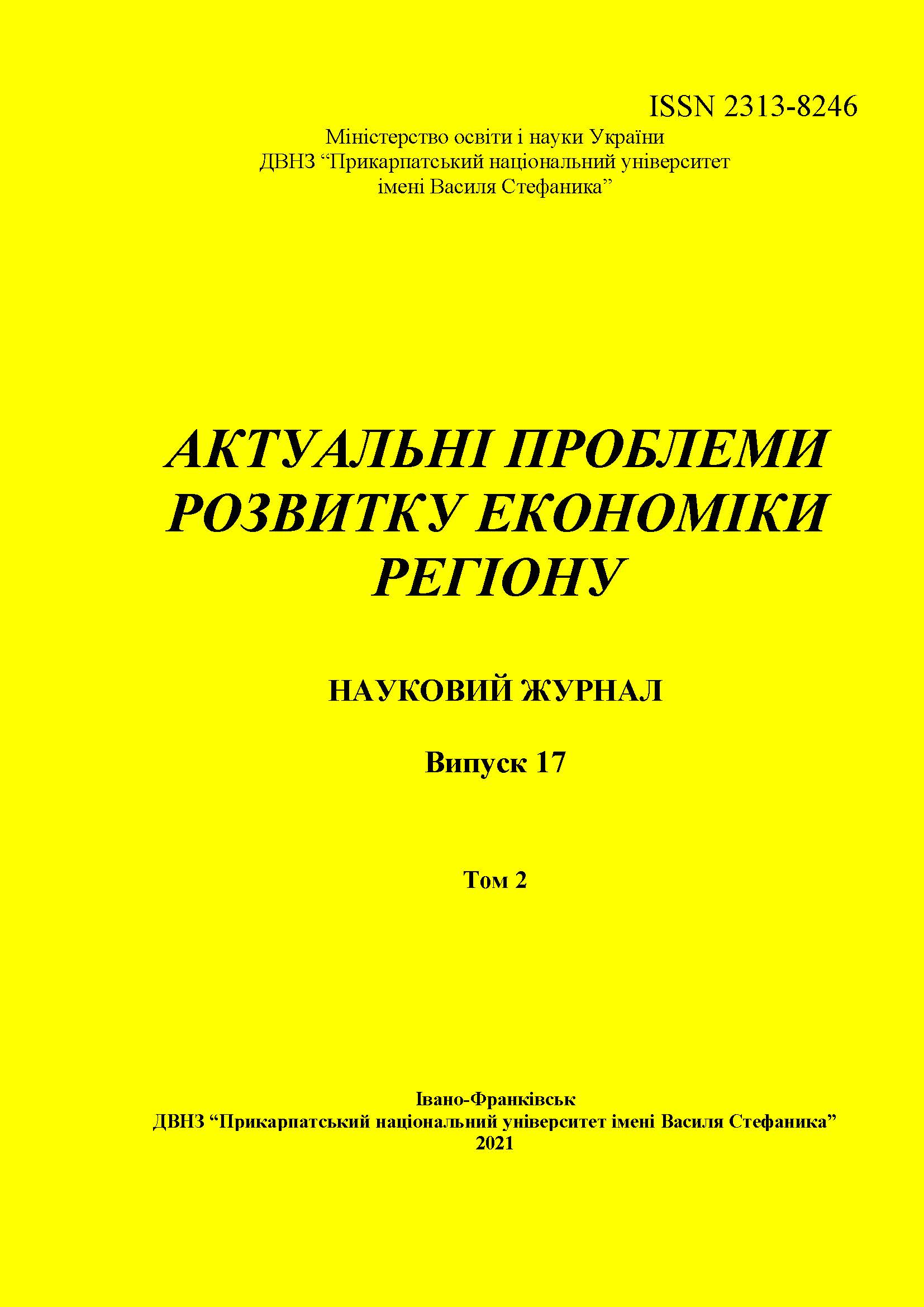BUDGET POLICY OF FINANCIAL SUPPORT OF UKRAINE'S DEFENSE CAPACITY
DOI:
https://doi.org/10.15330/apred.2.17.56-67Keywords:
budget policy, financial support, state defense capability, state budget, defense expenditures, classification of expendituresAbstract
The article is directed at studying the peculiarities of the budget policy of financial support of Ukraine's defense capabilities during 2011-2020. It is proved that due to permanent underfunding, the fighting capacity of the Ukrainian army at the beginning of the Russian aggression was reduced. It is established that the negative trend of insufficient funding for defense measures persists today, not allowing Ukraine to achieve the required level of state protection, so the issues of effective formation and use of state budget expenditures on defense are still relevant.
The purpose of the article is to monitor the current realities of financing the defense sector and identify areas for optimizing the financial support of Ukraine's defense capabilities in terms of increasing hybrid challenges.
The specifics of the scientific tasks that are the subject of the study required the use of a set of special methods, the use of which helped to identify trends in the financing of defense expenditures and identify real and potential threats and problems of financial support of Ukraine's defense capabilities. The level of meeting the needs of the state to finance national defense is characterized by three areas: defense spending according to the functional classification of expenditures; budget programs of the Ministry of Defense of Ukraine according to program classification; financial support for servicemen according to the economic classification of budget expenditures.
As a result of the study, it was proved that a key aspect of Ukraine's budget policy regarding the financial support of its defense capabilities is the effective formation and use of state budget funds to finance the Armed Forces of Ukraine. In the context of intensifying hybrid challenges, the defense budget of our state should gradually grow, providing for the modernization of the Armed Forces of Ukraine through the purchase of weapons and military equipment; the transition of the security and defense sector to NATO standards; building a professional army as a complex process in which the staffing of the Armed Forces under contract is only one of the elements; increasing the level of financial and material security and social protection of servicemen.
References
2. Kasperovych, Yu.V. Fiscal security of the state in the conditions of hybrid war: analytical report. Kyiv, 2019.
3.“Gross domestic product of Ukraine for the period 2011-2020”. Minfin, index.minfin.com.ua/economy/gdp/. Accessed 25 Oct. 2021.
4. Reports on the implementation of expenditures of the State Budget of Ukraine for 2011-2020”. treasury.gov, www.treasury.gov.ua/ua/file-storage/vikonannya-derzhavnogo-byudzhetu. Accessed 25 Oct. 2021.
5. “Experts named the most serious threats to Ukraine's sovereignty”. Unian, www.unian.ua/politics/380152-eksperti-nazvali-naybilsh-seryozni-zagrozi-suverenitetu-ukrajini.html. Accessed 25 Oct. 2021.
6. Report of the Temporary Commission of Inquiry of the Verkhovna Rada of Ukraine to investigate information on thefts in the Armed Forces of Ukraine and undermining the state's defense capabilities in the period from 2004 to 2017. The first part. Ukrmilitary, www.ukrmilitary.com/2019/06/rozkradannya-zvit-1.html. Accessed 28 Oct. 2021.
7. Vlasiuk, O.S. National security of Ukraine: the evolution of domestic policy problems: selected research papers. Kyiv, 2016.
8. Kyrylenko, O.P. “Current trends in defense spending from the state budget of Ukraine”. The world of finance, no. 3(60), 2019, pp. 179-188.
9. Radionov, Yu.D. “Execution of the State Budget of Ukraine in the conditions of the COVID-19 pandemic”. Finance of Ukraine, no. 9, 2021, pp. 52-69.
10. Cheberiako, O.V., Varnalii, Z.S. “Financial preconditions and assessment of defense financing in the conditions of the Russian-Ukrainian hybrid war”. Scientific Bulletin of Polissya, vol. 1, no. 4 (12), 2017, pp. 143-149.
Downloads
Published
How to Cite
Issue
Section
License
- Authors retain copyright and grant the journal right of first publication with the work simultaneously licensed under a Creative Commons Attribution NonCommercial NoDerivs 4.0 Unported License that allows others to share the work with an acknowledgement of the work's authorship and initial publication in this journal.
- Authors are able to enter into separate, additional contractual arrangements for the non-exclusive distribution of the journal's published version of the work (e.g., post it to an institutional repository or publish it in a book), with an acknowledgement of its initial publication in this journal.
- Authors are permitted and encouraged to post their work online (e.g., in institutional repositories or on their website) prior to and during the submission process, as it can lead to productive exchanges, as well as earlier and greater citation of published work (See The Effect of Open Access)


